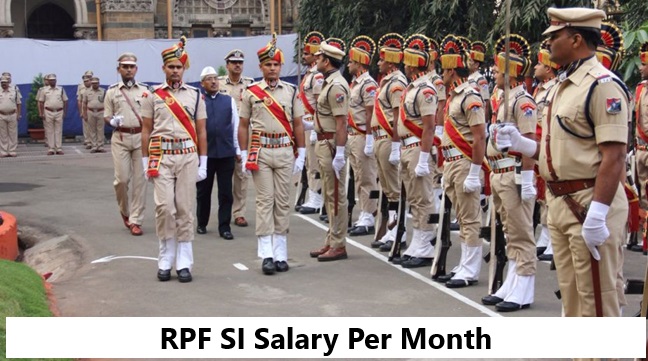Introduction to Professor Salary in India
Professor Salary in India: Professors play a pivotal role in shaping the future of society by imparting knowledge, conducting research, and mentoring students. In India, the profession of a professor is highly respected, attracting individuals passionate about education and intellectual growth. However, a common question arises: How much does a professor earn in India?
This article provides a comprehensive overview of professor salaries in India, covering pay scales, career growth, and factors influencing compensation. Whether you’re aspiring to join academia or are curious about the profession, this guide offers valuable insights.
Overview of Professor Roles and Responsibilities
Professors in India work in a variety of educational institutions, including universities, colleges, and research organizations. Their responsibilities include:
- Teaching undergraduate and postgraduate students.
- Conducting academic research and publishing findings.
- Mentoring students and guiding thesis or dissertation work.
- Designing and revising curricula.
- Participating in academic and administrative activities.
The pay scale of professors varies significantly depending on their qualifications, experience, and the type of institution they work for.
Salary Structure of Professors in India
1. Government Institutions
In government institutions like central and state universities, salaries are standardized under the University Grants Commission (UGC) pay scale, often revised with the implementation of pay commissions.
Entry-Level Position: Assistant Professor
- Pay Scale: ₹57,700 to ₹1,82,400 per month (7th Pay Commission).
- Annual Salary: ₹6.9 lakhs to ₹21.8 lakhs.
- Qualifications: NET/SLET qualification or a Ph.D.
Mid-Level Position: Associate Professor
- Pay Scale: ₹1,31,400 to ₹2,17,100 per month.
- Annual Salary: ₹15.7 lakhs to ₹26 lakhs.
- Qualifications: Ph.D. with at least 8 years of teaching/research experience.
Senior Position: Professor
- Pay Scale: ₹1,44,200 to ₹2,24,100 per month.
- Annual Salary: ₹17.3 lakhs to ₹26.9 lakhs.
- Qualifications: Ph.D. with significant academic and research achievements.
2. Private Institutions
In private colleges and universities, salaries vary based on the institution’s reputation, funding, and location. While some prestigious private universities offer competitive packages, others may pay less than government institutions.
Entry-Level Position: Assistant Professor
- Pay Scale: ₹30,000 to ₹70,000 per month.
- Annual Salary: ₹3.6 lakhs to ₹8.4 lakhs.
Mid-Level Position: Associate Professor
- Pay Scale: ₹50,000 to ₹1,00,000 per month.
- Annual Salary: ₹6 lakhs to ₹12 lakhs.
Senior Position: Professor
- Pay Scale: ₹70,000 to ₹2,00,000 per month.
- Annual Salary: ₹8.4 lakhs to ₹24 lakhs.
Factors Influencing Professor Salaries
- Institution Type and Funding
- Central universities generally offer higher pay than state universities.
- Well-funded private institutions, such as IITs or IIMs, also provide competitive salaries.
- Qualifications
- A Ph.D. significantly enhances earning potential, especially when paired with a strong publication record.
- Experience
- Professors with extensive teaching and research experience command higher salaries.
- Location
- Salaries in metropolitan cities like Delhi, Mumbai, and Bengaluru are typically higher due to the cost of living.
- Field of Expertise
- Professors in STEM (Science, Technology, Engineering, and Mathematics) fields often earn more than those in humanities and social sciences due to demand and funding availability.
Benefits and Perks of Being a Professor
Beyond salaries, professors in India enjoy several additional benefits:
- Housing Allowance
- Many institutions provide subsidized housing or housing allowances.
- Medical Benefits
- Comprehensive health coverage for professors and their families.
- Retirement Benefits
- Pension, gratuity, and provident fund schemes are common in government institutions.
- Research Grants
- Professors often receive funding for research projects and international conferences.
- Professional Development
- Opportunities for sabbaticals, workshops, and academic exchanges.
Career Growth in Academia
The path to becoming a professor in India is structured and hierarchical, offering clear milestones for career advancement:
1. Assistant Professor
- Entry-level position for teaching and research.
- Requires a postgraduate degree and NET/SET qualification or Ph.D.
2. Associate Professor
- Requires 8+ years of experience and significant research contributions.
- Focuses on advanced teaching and academic leadership.
3. Professor
- Senior-most academic position.
- Involves academic leadership, guiding doctoral candidates, and publishing groundbreaking research.
4. Administrative Roles
- Professors may advance to administrative roles such as Head of Department, Dean, or Vice-Chancellor, with substantial increases in pay and responsibilities.
Comparison of Salaries: Professors in India vs. Abroad
While Professors In India Earn respectable salaries, they often lag behind their counterparts in countries like the USA, UK, or Australia.
India:
- Average salary: ₹12 lakhs to ₹25 lakhs per annum.
USA:
- Average salary: $70,000 to $120,000 per annum (₹58 lakhs to ₹99 lakhs).
UK:
- Average salary: £40,000 to £80,000 per annum (₹40 lakhs to ₹80 lakhs).
Australia:
- Average salary: AUD 70,000 to AUD 120,000 per annum (₹38 lakhs to ₹65 lakhs).
Despite the disparity, Indian professors enjoy greater job security, especially in government institutions.
Challenges Faced by Professor Salary in India
While the profession is rewarding, professors in India face several challenges:
- Heavy Workload: Balancing teaching, research, and administrative tasks.
- Limited Funding: Particularly in state universities and smaller institutions.
- Bureaucracy: Administrative red tape can hinder academic freedom.
- Pay Gaps: Significant disparities between government and private institutions.
Tips for Aspiring Professors
- Pursue Advanced Degrees: A Ph.D. is essential for career advancement.
- Build a Research Portfolio: Publish in reputed journals and present at conferences.
- Gain Teaching Experience: Start as a teaching assistant or guest lecturer.
- Stay Updated: Keep abreast of advancements in your field and emerging teaching methodologies.
Conclusion to Professor Salary in India
The salary of a professor in India varies widely depending on factors such as qualifications, experience, and the type of institution. While government universities often offer standardized pay scales, private institutions can provide competitive packages based on their reputation.
Despite challenges, the profession of a professor remains one of the most respected and fulfilling career paths in India, offering opportunities for intellectual growth, societal impact, and financial stability.
As the demand for higher education and research grows, the role of professors will continue to be pivotal in shaping the intellectual and economic future of the country.
Key Takeaways: Professor Salary in India
- Salary Range: ₹30,000 to ₹2,24,100 per month, depending on the institution and experience.
- Benefits: Include housing, medical coverage, and research grants.
- Career Path: Assistant Professor → Associate Professor → Professor → Administrative Roles.
- Global Comparison: Salaries in India are lower than in Western countries but come with greater job security.











Leave a Reply